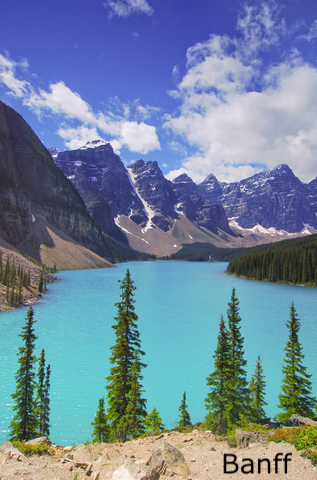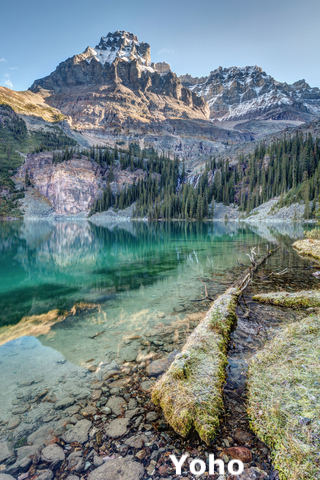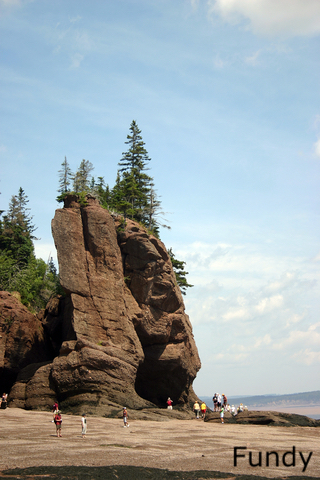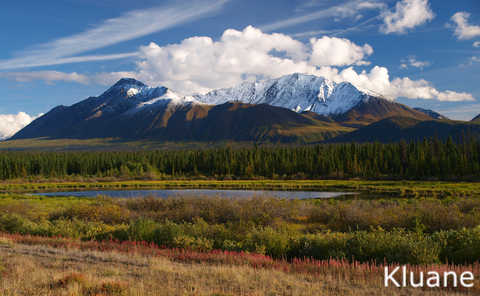Canada's National Parks Map
This interactive map shows the boundaries of Canada's National Parks. It also includes areas managed by the National Park Service of the United States for reference. Hover over the map to find the names and information about the parks. To learn more, scroll down. For more detail, zoom in.
Amazing Facts About Canada's National Parks and Provincial Parks
Canada is home to 38 National Parks and 10 National Park Reserves.
Canada's geography is the perfect scenario for stunning landforms and natural wonders. As I wrote about each Province and Territory, I had the pleasure of discovering these surprising facts myself.
I have also included facts about Provincial Parks. Even though this map shows only National Parks, as I wrote about all the provinces, I found that fascinating details occur in other natural areas.
Unfortunately, I could not find facts about Newfoundland and Labrador, Prince Edward Island, and Nova Scotia. Still looking for some!
If you just want to check prices Expedia can help. Fill in the information below and find a flight!
You can read about each province and its parks in the links provided!
Alberta

- Wood Buffalo National Park is the largest Canadian National Park and one of the largest in the world, with almost 45,000 Km2. This park holds the largest bison herd and the largest inland delta in North America. As if these records are not enough, Buffalo also holds the world’s largest beaver dam.
- Banff National Park is Canada’s First National Park and the most popular.
- Banff National Park and other National Parks are crossed by the Trans Canda Trail. This is a Canadian system of waterways, greenways, and roadways that crosses Canada from the Atlantic Ocean to the Pacific Ocean to the Arctic Ocean. This is the longest multi-use trail network in the world!
- If you want to visit Banff, Expedia has a package that includes hotel and flights. For more information click here!
- Over 130 complete dinosaur skeletons have been unearthed within Dinosaur Provincial Park. Over 50 species of dinosaurs have been found, leading to the park's designation as a UNESCO World Heritage Site.
- Waterton Lakes National Park protected area continues into Montana as Glacier National Park.
For an in-depth look at Alberta's wild side, Amazon has 200 Nature Hot Spots in Alberta: The Best Parks, Conservation Areas, and Wild Places book. It includes good descriptions of well-known locations and valuable information about lesser-known sites.
British Columbia

- British Columbia is the province with the most National Parks, 7 in total.
- The Burgess Shale is one of the most important fossil finds worldwide and is located in Yoho National Park. These are some of the oldest and most complex fossils in the world.
- You can stay close to Yoho National Park, in amazing cabins and lodges. For more information visit this link!
- The Illecillewaet Glacier in Canada’s Glacier National Park is one of the most studied glaciers in North America. This is thanks to its easy accessibility by rail and car.
- Khutzeymateen Provincial Park is Canada’s only grizzly bear sanctuary. Visitors have to get on a floatplane and take off from Prince Rupert to reach the park.
- Della Falls, located in Strathcona Provincial Park on Vancouver Island, constitute the highest waterfalls in British Columbia, Canada.
There is a thorough guide about parks in British Columbia on Amazon. 100 Nature Hot Spots in British Columbia: The Best Parks, Conservation Areas, and Wild Places. This beautifully illustrated book explores B.C. in six chapters and various destinations.
Manitoba
- Wapusk National Park is a broad wilderness area in the remote subarctic. The park protects one of the world's largest polar bear maternity den areas. The park has about 1,000 bears roaming the land.
- Riding Mountain National Park is located in Treaty 2 Territory, where park officials work together with Anishinabe, First Treaties 2, 4, and 1. Here, Indigenous contributions are honored and highly recognized by the province of Canada.
- Little Limestone Lake Provincial park is the world’s most prominent example of a marl lake. This lake changes color as its temperature changes!
- Whiteshell provincial park in Manitoba has a lake formed by a meteorite strike.

New Brunswick
- The world’s highest tides are found in Fundy National Park. The waters rise up to 12m or more. Fundy is also the only park in Canada with covered bridges.
- The Saguenay-St. Lawrence Marine Park is recognized as one of the best places in the world for whale watching.

Northwest Territory
- Aulavik National Park on Banks Island has the world’s highest muskoxen and Peary caribou concentration.
- Nahanni National Park Reserve was the first natural UNESCO World Heritage Site in Canada and the 4th one in the world. It is home to Virginia Falls, twice as tall as Niagara Falls and considered one of the most spectacular waterfalls in Canada.
Nunavut Territory
- Roughly 75% of the world’s narwhal population migrate into Pond Inlet's estuaries and shallow bays. Those are the shores of Sirmilik National Park.
- Quttinirpaaq National Park is the second most northerly park on Earth. In Inuktitut, Quttinirpaaq means “top of the world.”
Amazon has a practical and delightful book titled National Geographic Guide to the National Parks of Canada. It has a detailed description of each park and the must-sees and activities of every site.
Ontario
- The Georgian Bay or "Thirty Thousand Islands" are the world's largest freshwater archipelago.
- Fathom Five National Marine Park in Lake Huron is the diving capital of Canada, thanks to the rock formations, the 22 shipwrecks, and its transparent waters.
- Algonquin is the oldest provincial park in Canada and is located in Ontario.
- Point Pelle Provincial park is Canada’s southernmost point.

Quebec
- Pingualuit National Park in northern Quebec province is home to the well-known and legendary crystal eye. The crystal eye is a 1.4 million-year-old crater left by a meteorite.
- Parc national de l'Île-Bonaventure-et-du-Rocher-Percé is home to the largest migratory bird refuge in North America. Its colony of 110,000 northern gannets is the most accessible in the world.
Saskatchewan
- Grasslands National Park. This is the only park dedicated to preserve Prairie Grasslands in Canada. It protects shortgrass and dry-mixed grass.
- The Athabasca Sand Dunes in Saskatchewan are the most northerly active sand dune formations on Earth.
Yukon
- Kluane National Park and Reserves in the Yukon, Glacier Bay & Wrangell-St. Elias National Parks and Preserves in Alaska, along with Tatshenshini-Alsek Provincial Park of British Columbia, comprise the largest protected area in the world. Combined, they cover an area of approximately 8.5 million hectares.
- Kluane National Park has Mount Logan, Canada's highest peak, at 19,550 feet (5,959 m). Kluane is also home to North America’s most diverse Grizzly population in the world and the largest non-polar icefields in the world.
- Ivvavik, meaning "a place for giving birth" in Inuvialuktun, the language of the Inuvialuit, is the first national park in Canada to be created as a result of an Indigenous land claim agreement.
- Porcupine caribou have the longest land migration of any animal in the world. This migration occurs in the border of Yukon and Alaska. These caribou spend part of their migration calving in Ivvavik National Park.

Most Visited National Parks in Canada
Even though Canada has many amazing parks. Visitors tend to focus on just a few. If you want to know which are the most popular or where to avoid the crowds, you might want to check this list.
This visitor data is for 2018 - 2019. Source: World Atlas.
| Park | Province/Territory | Visitors in millions |
|---|---|---|
| Banff | Alberta | 4.0 |
| Jasper | Alberta | 2.4 |
| Saguenay-St. Lawrence | Quebec | 1.2 |
| Pacific Rim | British Columbia | 1.1 |
| Mount Revelstoke & Glacier | British Columbia | 0.77 |
| Prince Edward Island | Prince Edward Island | 0.74 |
| Yoho | British Columbia | 0.69 |
| Kootenay | British Columbia | 0.51 |
| Waterton Lakes | Alberta | 0.41 |
| Fathom Five | Ontario | 0.38 |
Largest National Parks in Canada
Canada's National Parks are immense. If the map does not give you an approximate idea, here are the exact areas of the largest ones.
This visitor data is for 2018 - 2019. Source: World Atlas
| Park | Province/Territory | Acres in millions |
|---|---|---|
| Wood Buffalo | Alberta Northwest Territories | 11.0 |
| Quttinirpaaq | Nunavut | 9.3 |
| Nahanni (Reserve) | Northwest Territories | 7.4 |
| Sirmilik | Nunavut | 5.48 |
| Kluane Park and Reserve | Yukon | 5.43 |
| Ukkusiksalik | Nunavut | 5.1 |
| Auyuittuq | Nunavut | 4.7 |
| Tuktut Nogait | Northwest Territories | 4.0 |
| Aulavik | Northwest Territories | 3.0 |
| Wapusk | Manitoba | 2.8 |
| Qausuittuq | Nunavut | 2.7 |
| Jasper | Alberta | 2.6 |
| Ivvavik | Yukon | 2.5 |
| Torngat Mountains | Newfoundland and Labrador | 2.3 |
| Banff | Alberta | 1.6 |
Inspiration for Canada's National Parks Map
This map was initially created for the National Parks of North America. I wanted to highlight the shared protected areas of Canada, the U.S., and Mexico. Nevertheless, there was so much information to include that I decided to split the map into 3 maps.
You can find the National Parks of the United States here and the National Parks of Mexico here.
Resources for Canada's Natural Parks Map
The shapefiles with data for Canada's National Parks were obtained from Open Canada.
The shapefiles with country polygons were downloaded from Naturalearth.
This map will be updated with improved and recent information! To receive updates on this and more nature maps, join my email list!!!!!!!
Made by Luz K. Molina with D3.js.








